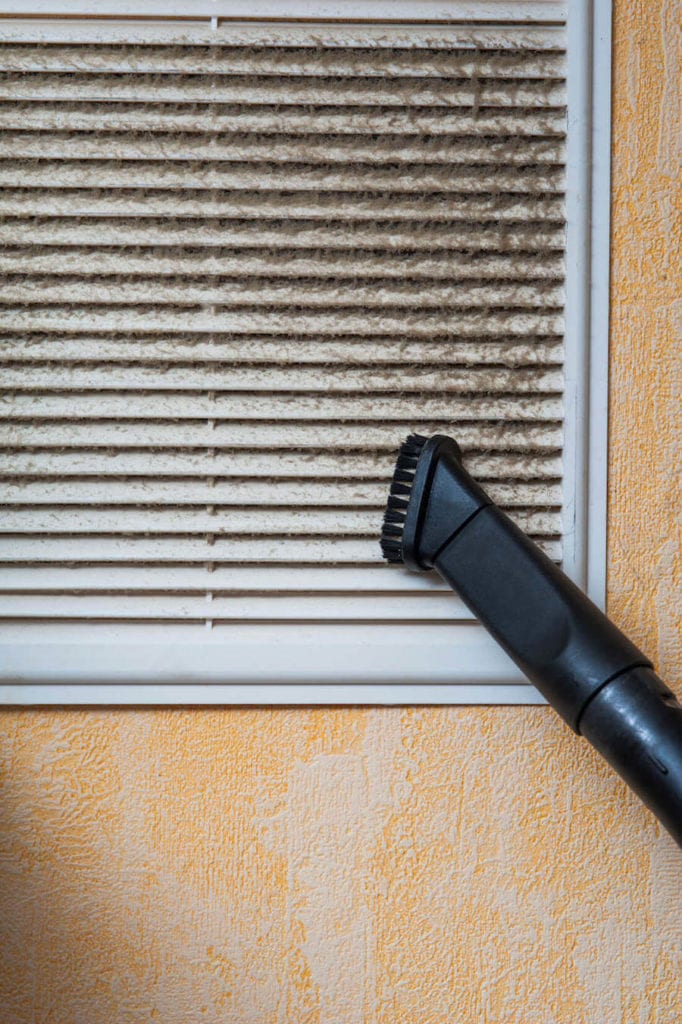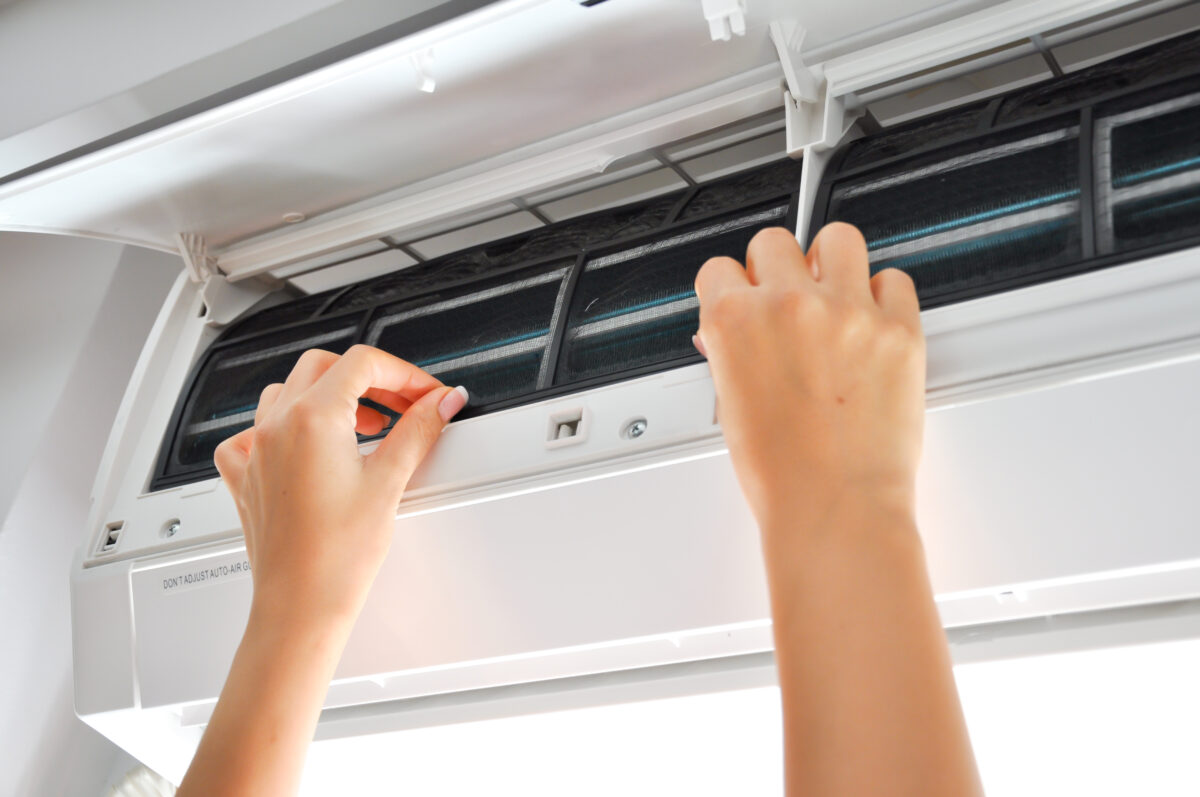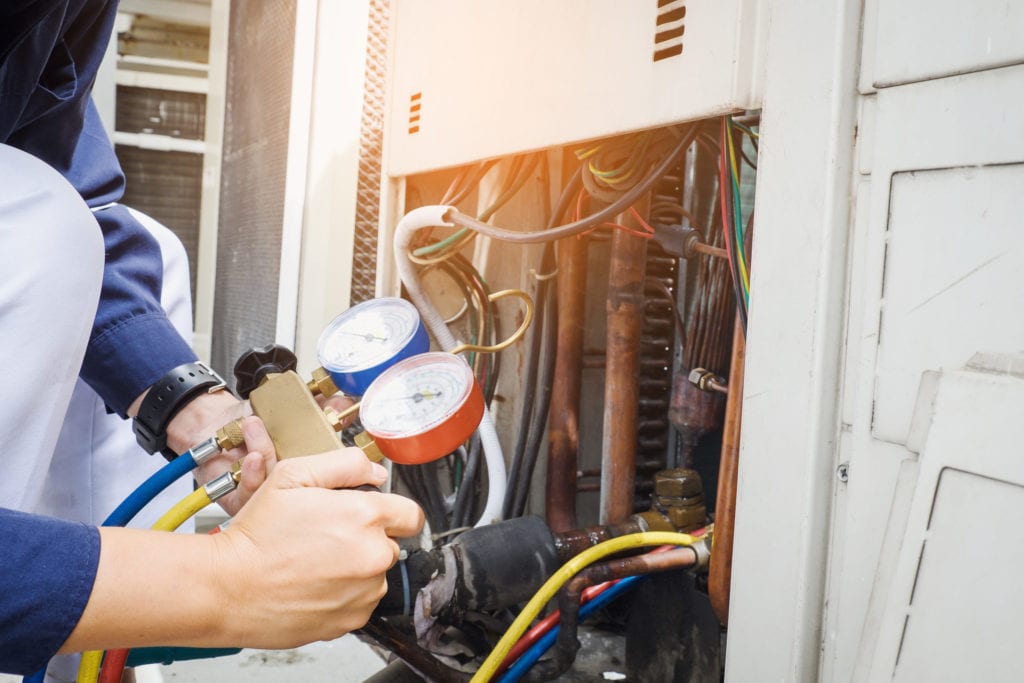How to Keep Your Heating and Cooling Vents Clean

Dusty heating and cooling vents aren’t just ugly. They can also restrict the airflow into a room if the dust buildup gets bad enough, and you risk dust and debris getting down into your air ducts. So, to keep your heating and cooling vents free of dust and debris, below we have both some cleaning tips and some preventative ideas.
These tips to keep your heating and cooling vents clean are actually very easy to do and only take a few minutes. They also tend to be low in cost. You’ll need your vacuum cleaner, some soap and water, towels/rags and crevice cleaning supplies to clean the vent.
Some of the preventative measures, on the other hand, could require some items you don’t already have around the home. For instance, an air purifier to capture dust can run around $20 for small devices or all the way up to hundreds of dollars, depending on how many features you want the device to have. Air vent covers often cost around $5.

Cleaning Tips
Regular cleaning is your best bet in keeping your heating and cooling vents free of dust and debris. That way, nothing has the chance to build up to problematic levels. In order to get your vents clean, follow these tips:
- Start by turning off the power source to your air conditioner at the breaker. That way, your HVAC system won’t kick on when you’re cleaning it, blowing dust everywhere.
- Vacuum the vent cover itself, ideally with a crevice or brush attachment.
- Remove the vent cover by unscrewing it, if it’s screwed in place. Pull the cover straight up from the duct.
- Soak the vent cover in warm, soapy water if there is any stubborn dirt. Keeping soaking until that dirt loosens.
- Wipe the cover down with a wet rag.
- You can clean between the slats of the vent cover with any narrow cleaning tool, like a pipe cleaner, narrow soft brush or even a cotton swab.
- You should manually dry between the slats with either a thin rag or a hair dryer on the hot setting to prevent water from pooling. If you use a hair dryer, be careful touching the metal after you blow dry it on a hot setting, as the metal can get warm. From there, you can either let heating and cooling vents air dry on a towel or dry them by hand.
- After they’re dry, put the vent covers back and turn the power source back on.
Preventative Maintenance for Your Heating and Cooling Vents
You can also keep your heating and cooling vents clear of dust and debris with some defensive measures. A popular way to do so is to invest in a magnetic or plastic vent cover. These are usually used to direct airflow in a certain direction or to prevent excess air from coming through a closed vent, so they’re only suitable if you wish to restrict airflow. But they have the added benefit of keeping dust and grime off the vent, too.
Another option is to protect the heating and cooling vents themselves through lifestyle changes. For instance, encourage pets to avoid the heating and cooling vents if they have a habit of laying on or near them. That will keep dirt and pet hair away from the heating and cooling system. Make sure to vacuum the floor regularly so that dirt and debris are not close to the vent. You may also want to invest in an indoor air purifier to remove dust from the home.



